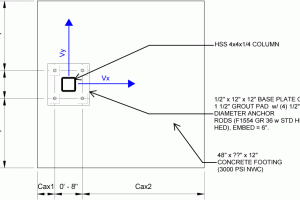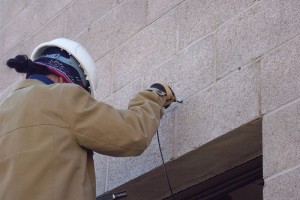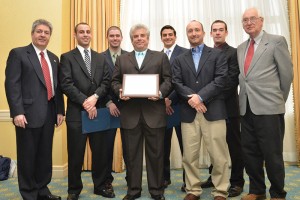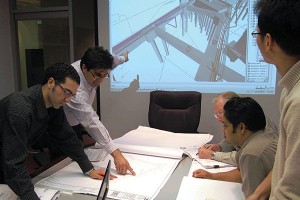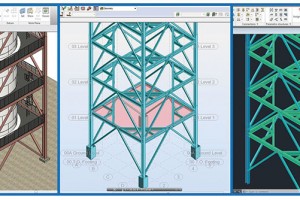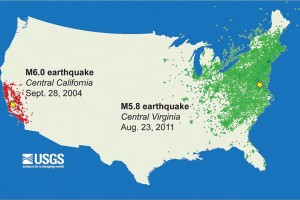Concrete Capacity Design (CCD) has been a code methodology for anchor design since it was introduced directly into section 1913 of the 2000 International Building Code (IBC). It was initially a strength design option and was limited to cast-in-place anchors only. The CCD method provided better predictions of concrete breakout strengths than the previously common 45-degree cone method. …
Review Category : Articles
Why a Code?
In March 2012, the International Code Council (ICC) published the first edition of the International Green Construction CodeTM (2012 IGCCTM). The need for the development of a code-enforcable set of green building requirements arose from the fact that, throughout the U.S., LEED® certification of buildings was increasingly mandated by government. …
Nondestructive and In -Situ Methods
Owners and designers may find themselves confronted with the task of deciding what to do with an existing masonry building, particularly if there will be a change of use or modifications to the structural system. Part of that decision should include determination of whether the structural system is adequate in its current condition for the building’s intended use, whether minor or extensive repair and retrofit measures are required, or whether the building has deteriorated to a state that it is beyond its usable life. …
As an insurance agent working with design firms every day, the new year often begins with phone calls from my engineer clients asking me about document retention. Many of these firms still maintain paper project files along with electronic copies, and some may have part of the project file stored electronically and part in paper form. Firms began to digitize drawings and files years ago, but they often have several years of old drawings and project files stored in their offices. Their question always is: “How long do I have to keep these records?” …
Each year, the Structural Engineering Institute (SEI) gives undergraduate engineering students the opportunity to apply what they’ve learned, and showcase their engineering skills, through the annual SEI Student Competition. I want to take this opportunity to recognize the top three teams from last year’s competition and to tout this program’s many benefits. …
In 2012, three members of NCSEA Member Organizations under the age of 35 received scholarships to attend the Annual Conference in Saint Louis for writing essays on the benefits of Young Member Groups (YMGs) within Structural Engineers Associations (SEAs). Heather Anesta’s submission appeared in the NCSEA News portion of the April 2012 issue of STRUCTURE magazine. The two others are included here, along with a piece written by a more senior professional to provide an additional point of view. …
It’s amazing that something as simple and as common as wood-framed stair stringers do not yet have specific prescriptive code construction provisions. Despite the commonality of wood-framed stair stringers, they still suffer from structural performance issues which result in scenarios that range from cracked drywall to severe injuries. …
Small Effort Yields Big Dividends
This article makes the case that the use of a Geotechnical Engineer for his/her engineering expertise could be more advantageous to the design team than a request for just low-cost drilling and a cheap Geotechnical Report. …
The Future of “Single-Source” Structural Engineering
Structural engineering design firms looking for opportunities to increase revenue, which today should include most everybody, should consider looking to our close neighbors on the construction side of the industry for inspiration. Based on the construction business model and the ever-increasing interoperability of today’s Building Information Modeling (BIM) software, today’s structural engineering workflows can be reshaped to take advantage of technology to improve project returns. …
We had an Earthquake in Virginia – Now what?
The need to address regional aspects of the Eastern United States (EUS) in model building codes became even more evident with the 2011 Mineral, Virginia earthquake, the most felt event in modern US history, considering the extraordinarily large felt geographic area combined with a high population density. This article presents some facts of the 2011 earthquake that, when coupled with evidence from analytical studies and better understanding of the local geology and tectonic setting, highlight key seismic design issues that are not addressed sufficiently in present codes. …

